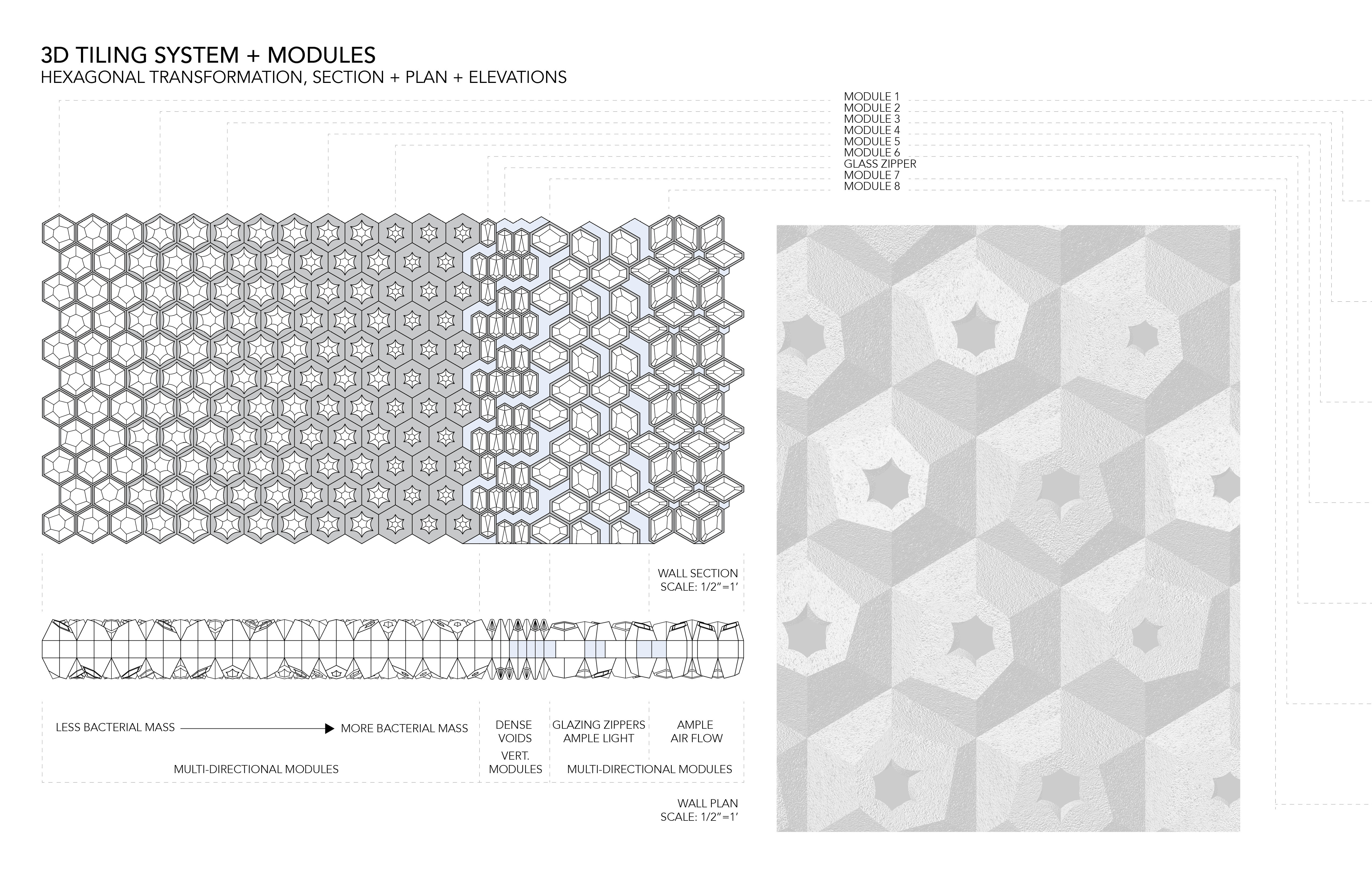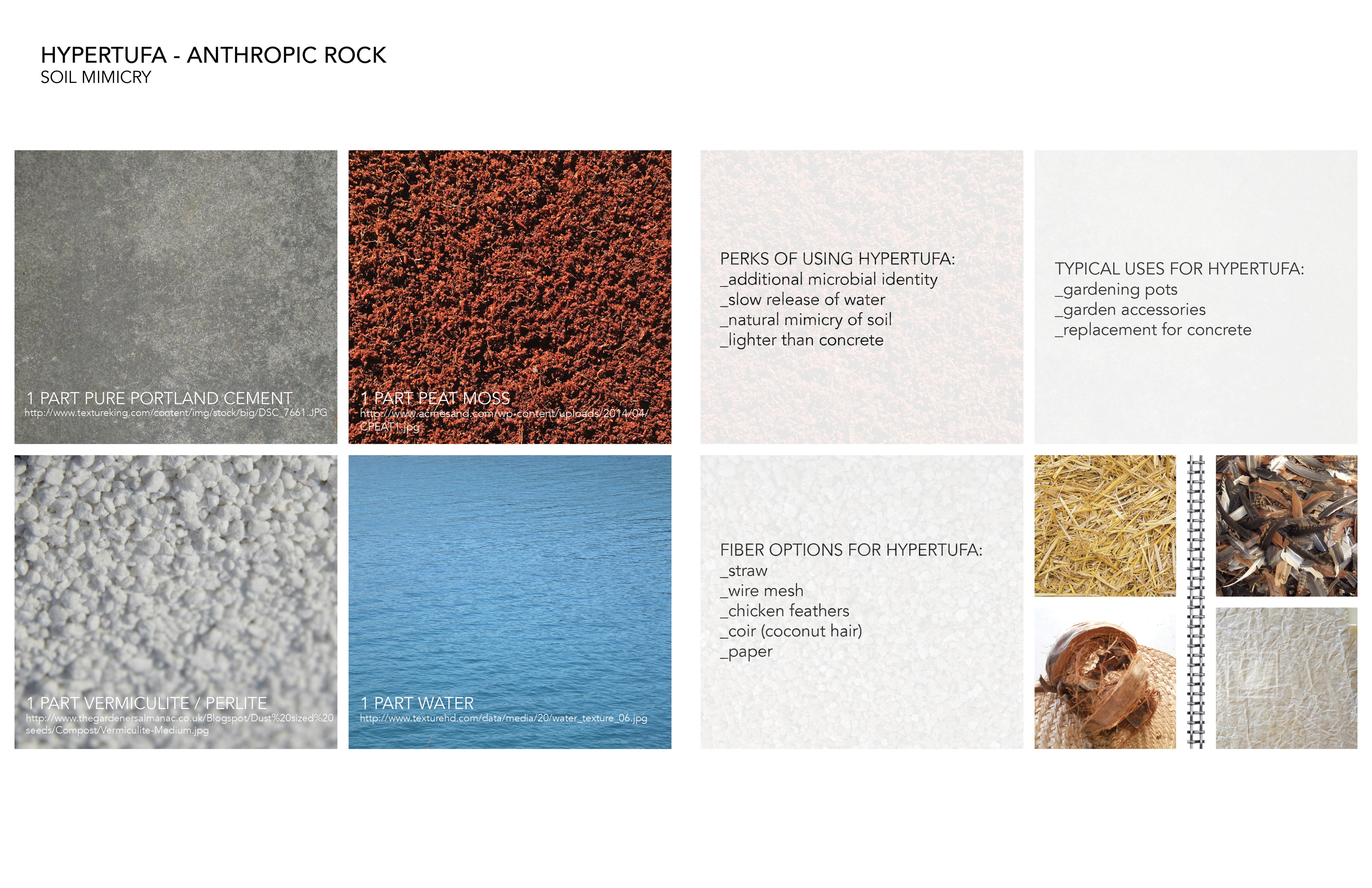BioModernism : microAnthropometrics of Architecture
Professor : Ted Ngai︎
Fall 2014 - May 2015
View the Presentation here
Today, we live in a world full of illness and hypochondria. Architecture holds a significant role in our world and takes the brunt of this obsession. Yet architecture is simply microbes, both bacteria and viruses; each element of the space we design has its own biological personality. It is urgent that there is a societal change in mentality regarding what is healthy and what is not.


Our world begs for a new typology, a BioModernism; an extension of the 20th Century Modernism that led to some of the most influential buildings in our time. Le Corbusier adjusted his designs to accommodate a new need : the human scale, or anthropometrics. This building systems development proposes that the wall poche that designers have become so accustomed to be taken away and the microbial identity and physical makeup of the building materials be exposed and re-designed in an attempt to re-brand architecture as a probiotic for the human and nature.


Biodiversity has long been a controversial topic and it is undefined exactly what may be the difference between a positive and negative microbe. However, it is clear that environments lacking this microflora diversity, such as hospitals, produce even more harm for the inhabitant by creating resistant super-bugs. By using hypertufa, a material consisting of portland cement, perlite, used for drainage, peat moss, for nutrients, and water, introducing biodiversity into our architectural environments may be more simple than originally anticipated. The substrate performs on its own, while also retaining the ability to be a host for plant and bacterial life, allowing us to reap the benefits of living in a space rid from excessive chemicals.




View the entire archived book below:
